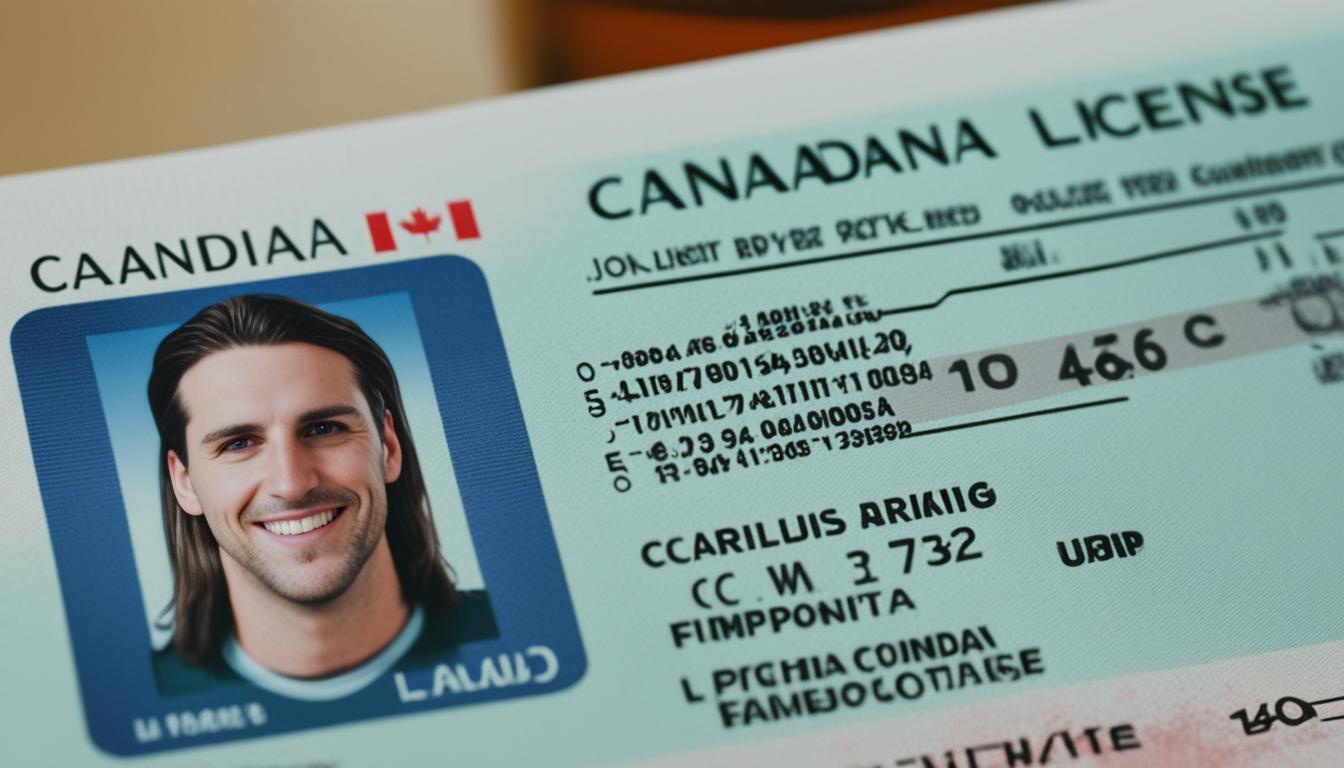Understanding Drinking Laws in Canada Safely
As a responsible citizen, it is essential to have a thorough understanding of the drinking laws and regulations in Canada. These laws are in place to ensure the safe and responsible consumption of alcohol, promoting personal safety and well-being. By adhering to these regulations, you can avoid legal issues and contribute to a healthier drinking culture in our country.
Canada has established comprehensive alcohol laws and regulations that cover various aspects of alcohol consumption, including the legal drinking age, guidelines for alcohol consumption limits, drinking and driving laws, liquor laws, and more. By familiarizing yourself with these regulations, you can make informed decisions regarding alcohol and protect yourself and those around you.
Key Takeaways:
- Understanding the drinking laws in Canada is crucial for safe and responsible alcohol consumption.
- Canada has specific regulations regarding the legal drinking age, alcohol consumption limits, and drinking and driving.
- Adhering to these laws can help prevent legal issues and promote personal safety.
- By being informed, you can contribute to a healthier drinking culture in Canada.
- Stay tuned as we delve deeper into specific aspects of Canada’s drinking laws and regulations.
Legal Drinking Age in Canada
The legal drinking age in Canada varies by province and territory. In most provinces, the minimum legal drinking age is 19, while in Alberta, Manitoba, and Quebec, it is 18. These laws regulate who can purchase, possess, consume, and supply alcohol in Canada. It is important to note that underage drinking is illegal and can lead to fines or other legal consequences.
| Province/Territory | Legal Drinking Age |
|---|---|
| Alberta | 18 |
| British Columbia | 19 |
| Manitoba | 18 |
| New Brunswick | 19 |
| Newfoundland and Labrador | 19 |
| Northwest Territories | 19 |
| Nova Scotia | 19 |
| Nunavut | 19 |
| Ontario | 19 |
| Prince Edward Island | 19 |
| Quebec | 18 |
| Saskatchewan | 19 |
| Yukon | 19 |
These regulations ensure that the legal drinking age is respected and that those who are of legal drinking age can enjoy alcohol responsibly. It is crucial to familiarize yourself with the drinking laws in your province or territory to avoid any legal issues. Remember, drinking alcohol comes with responsibilities, and it is always important to consume alcohol in moderation and in a safe and responsible manner.
Standard Drink and Low-Risk Alcohol Drinking Guidelines
In Canada, it is important to understand the concept of a standard drink and adhere to low-risk alcohol drinking guidelines. A standard drink is defined as 17.05 milliliters or 13.45 grams of pure alcohol. This measurement helps individuals track and regulate their alcohol consumption effectively.
It is crucial to promote responsible drinking habits to reduce the short-term and long-term health risks associated with alcohol use. Canada has developed low-risk alcohol drinking guidelines that provide recommendations for different groups, including women, men, and pregnant women.
Women are advised to limit their alcohol consumption to no more than 2 standard drinks per day, 10 standard drinks per week, and 3 standard drinks on special occasions. Men are advised to limit their alcohol consumption to no more than 3 standard drinks per day, 15 standard drinks per week, and 4 standard drinks on special occasions. Pregnant women are advised to avoid alcohol entirely to ensure the safety of both mother and child.
By following these guidelines, individuals can make informed decisions about their alcohol consumption and reduce the potential risks associated with excessive drinking.

Alcohol Consumption Limits
When it comes to alcohol consumption, it’s important to understand the recommended limits to ensure your safety and well-being. According to the low-risk alcohol drinking guidelines in Canada, here are the advised alcohol consumption limits:
- For women:
- No more than 2 standard drinks per day
- No more than 10 standard drinks per week
- No more than 3 standard drinks on special occasions
- For men:
- No more than 3 standard drinks per day
- No more than 15 standard drinks per week
- No more than 4 standard drinks on special occasions
It’s important to note that these limits are meant to reduce the short-term and long-term health risks associated with alcohol consumption. Adhering to these limits can help you make responsible choices and maintain a healthy relationship with alcohol.

| Women | Men | |
|---|---|---|
| Daily Limit | 2 standard drinks | 3 standard drinks |
| Weekly Limit | 10 standard drinks | 15 standard drinks |
| Special Occasions | 3 standard drinks | 4 standard drinks |
Drinking and Driving Laws in Canada
In Canada, it is essential to understand and abide by the drinking and driving laws to ensure personal safety and the well-being of others. It is illegal to drive under the influence of alcohol, and the consequences can be severe.
The legal blood alcohol concentration (BAC) limit for operating a motor vehicle in Canada is 0.08%. This means that if the concentration of alcohol in your blood exceeds 0.08%, you can be charged with a drinking and driving offense. It is crucial to note that even a BAC below the legal limit can impair your driving abilities and increase the risk of accidents.
Penalties for drinking and driving offenses can include fines, license suspensions, mandatory education programs, and in some cases, imprisonment. These strict laws and penalties aim to deter individuals from driving while intoxicated and protect the safety of all road users.
When it comes to drinking and driving, it is always better to err on the side of caution. If you plan to drink, ensure you have a designated driver, use public transportation, or take a taxi or ride-sharing service. Putting safety first can prevent accidents, save lives, and keep our roads safer for everyone.
- It is illegal to drive under the influence of alcohol in Canada.
- The legal blood alcohol concentration (BAC) limit for operating a motor vehicle is 0.08%.
- Even a BAC below the legal limit can impair driving abilities and increase the risk of accidents.
- Penalties for drinking and driving offenses can include fines, license suspensions, mandatory education programs, and imprisonment.
- Ensure personal safety and the safety of others by having a designated driver or using alternative transportation methods.
Alcohol Pricing and Social Reference Prices
When it comes to alcohol pricing in Canada, there is an underlying strategy aimed at reducing alcohol consumption and the associated risks. The prices of different types of beverages are influenced by excise duty rates, which play a significant role in determining the cost of alcohol.
An important aspect of responsible alcohol consumption is understanding the alcohol content of various drinks. To help consumers make informed decisions, the National Alcohol Strategy Advisory Committee (NASAC) recommends the use of Social Reference Prices (SRPs) for alcoholic beverages.
SRPs reflect the alcohol content of drinks and serve as a reference point for consumers. By having access to SRPs, individuals can gauge the alcohol content and make choices that align with their consumption goals and limits. This promotes responsible drinking practices and contributes to a safer drinking culture.
To further support the implementation of SRPs, it is also crucial to close any loopholes that allow the sale of alcohol below the recommended reference prices. Consistency in pricing and discouraging discounts below SRPs helps maintain a fair market and prevents excessive consumption due to overly affordable alcohol.
Incorporating social reference prices into the alcohol pricing framework is a step towards fostering a healthier drinking environment and empowering individuals to make well-informed decisions about their alcohol consumption.
Enhanced Alcohol Container Labels
In Canada, it is surprising that bottles, cans, and other alcohol containers are not required to display nutrition information, health warnings, standard drink information, or low-risk alcohol drinking guidelines. As a consumer, I believe that having access to this information is crucial for making informed decisions about alcohol consumption and promoting a culture of responsible drinking.
Enhanced alcohol container labels can bridge this information gap and provide consumers with important details about the risks associated with alcohol consumption. By prominently displaying nutrition information, such as calorie content and ingredients, consumers can better understand the potential impact of their drinking habits on their overall health and well-being.
Furthermore, health warnings on alcohol labels can help raise awareness about the potential health risks associated with excessive alcohol consumption. This information can serve as a reminder to individuals to drink responsibly and in moderation.
Additionally, including standard drink information on alcohol containers can help individuals monitor their alcohol intake and adhere to low-risk drinking guidelines. By knowing how many standard drinks they are consuming, individuals can make informed choices about their alcohol consumption and reduce the risk of alcohol-related harm.
Studies have shown that enhanced alcohol container labels are supported by the public and can increase consumer knowledge about the risks of alcohol consumption. By providing this information in a clear and accessible manner, individuals can make more informed choices about their drinking habits and potentially reduce their alcohol consumption.
| Benefits of Enhanced Alcohol Container Labels |
|---|
| Increased consumer knowledge about the risks of alcohol consumption |
| Promotion of responsible drinking and adherence to low-risk alcohol drinking guidelines |
| Improved awareness of nutrition information and potential health risks |
| Support for individuals in making informed choices about their alcohol consumption |
Municipal Alcohol Policies and Initiatives
Municipalities across Canada play a crucial role in promoting safer alcohol consumption by implementing alcohol policies and initiatives at the local level. These policies are designed to address concerns about risks and liability, while also setting community expectations and supporting healthy lifestyles.
One key aspect of municipal alcohol policies is the establishment of guidelines for events where alcohol is available. These guidelines ensure that alcohol is served responsibly and in accordance with legal requirements. They also help organizers plan and manage events effectively, taking into consideration the safety and well-being of both attendees and the community.
Moreover, municipal alcohol policies contribute to creating safe and enjoyable environments for residents and visitors alike. By regulating the availability and consumption of alcohol, municipalities can prevent alcohol-related harms such as excessive drinking, public intoxication, and drunk driving.
Alcohol regulations at the local level are vital in maintaining the overall well-being of the community. They enable municipalities to uphold public health and safety standards while balancing the economic and social aspects of alcohol consumption. Through these policies and initiatives, Canadian municipalities continue to strive for a responsible and inclusive drinking culture.
- The Role of Police in Community Safety & Unity - October 6, 2025
- Quebec Police Officer Salary Insights 2023 - July 13, 2025
- Canada Arrest Protocol: What Police Say Upon Arrest - June 12, 2025




















Post Comment